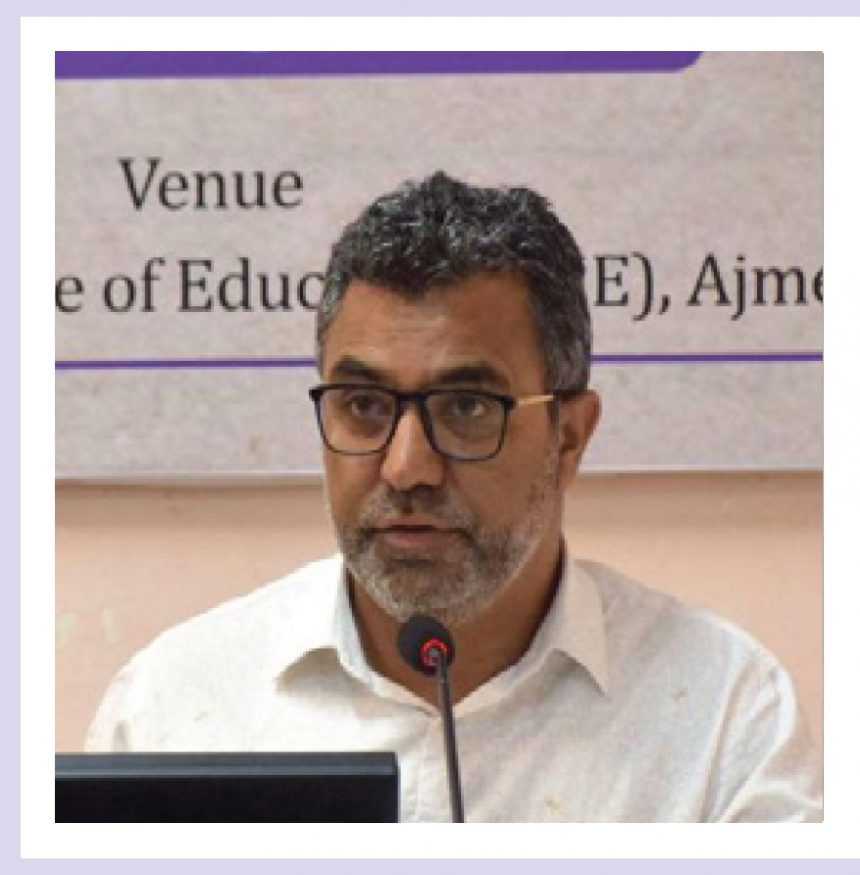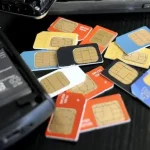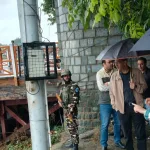In an era where education stands at a crossroads between traditional methodologies and evolving student needs, teachers are emerging as the architects of a revolutionary approach to learning—Universal Design for Learning (UDL). This transformative framework isn’t just changing how we teach; it’s fundamentally reshaping our understanding of how students learn and grow.
The Paradigm Shift: From One-Size-Fits-All to Universal Design
The traditional classroom, with its standardized approach to education, is rapidly becoming obsolete. “We’re witnessing a profound shift from conventional teaching methods to a more nuanced, individualized approach,” explains an educational psychologist. “Teachers are now expected to be master designers, creating learning environments that accommodate every student’s unique learning style and potential.”
This transformation is particularly evident in classrooms where UDL principles are thoughtfully implemented. Consider a veteran science teacher who transformed a standard lesson on the water cycle into an immersive multi-sensory experience. Walking into her classroom, students encounter a rich learning environment where abstract concepts come alive through carefully designed stations. At one corner, a large tactile model allows students to trace water’s journey with their fingers. Nearby, a digital animation plays on a tablet, while an audio station narrates the process through storytelling. Through this orchestrated approach to teaching, incorporating visual, auditory, and tactile elements, she ensures that every student, regardless of their learning style or abilities, can access and understand the material.
The Three Pillars of Universal Design
The UDL framework rests on three fundamental principles: engagement, representation, and action/expression.These principles serve as the foundation for creating inclusive learning environments that can adapt to diverse student needs.
Engagement: Unlocking Student Motivation
“Engagement isn’t just about keeping students interested,” notes a famous Inclusive education expert. “It’s about creating meaningful connections that inspire genuine curiosity and drive for learning.” Teachers implementing UDL strategies understand the multifaceted nature of student engagement. They begin by creating personally relevant learning experiences that connect classroom content to students’ lives and interests. Through careful design, they provide multiple paths to success, recognizing that achievement can take many forms. These educators cultivate autonomous learning environments where students feel empowered to take ownership of their educational journey. Perhaps most importantly, they focus on building resilience through structured challenges, carefully calibrating difficulties to push students beyond their comfort zones while maintaining their confidence and motivation.
Representation: Multiple Pathways to Understanding
The way information is presented can make the difference between confusion and comprehension. Modern UDL classrooms embrace a rich tapestry of instructional methods that cater to diverse learning preferences and needs. Teachers skillfully weave together digital and traditional textual resources, ensuring that students can access content in ways that resonate with their learning styles. Visual aids and graphical representations transform abstract concepts into tangible understanding, while audio materials and verbal explanations provide alternative routes to comprehension. Hands-on learning experiences allow students to physically engage with concepts, creating deeper neural connections and lasting understanding. These various approaches are further enhanced by interactive technology platforms that adapt to individual learning paces and preferences. This comprehensive approach to representation ensures that every student has multiple entry points to understanding new concepts, creating an inclusive learning environment where comprehension flourishes through diversity of presentation.
Action and Expression: Diverse Ways to Demonstrate Knowledge
Students need various channels to express their understanding. “When we limit how students can demonstrate their knowledge, we limit their potential for success,” explains a leading UDL researcher. “The key is to provide multiple avenues for expression while maintaining high standards.”
Character Development: The New Focus
The shift from mere personality development to character formation represents a significant evolution in educational philosophy. “The 21st-century workplace demands more than just technical skills,” says an eminent Career Counselor. “Employers are looking for individuals with strong ethical foundations, emotional intelligence, and professional integrity.”
This focus on character development aligns perfectly with UDL principles, as it requires teachers to orchestrate a comprehensive approach to student growth. At its core, this approach involves creating meaningful opportunities for ethical decision-making, where students grapple with real-world scenarios that challenge their moral reasoning. Through carefully designed collaborative learning experiences, teachers nurture empathy, helping students understand and appreciate diverse perspectives. Professional communication skills are developed through structured interactions and presentations, preparing students for future workplace demands. Teachers also deliberately construct challenging activities that build resilience, helping students develop the grit and determination needed for long-term success. Throughout this process, they create spaces for reflection and self-awareness, encouraging students to understand their own growth, recognize their strengths, and identify areas for improvement. This holistic approach to character development becomes a natural extension of UDL principles, creating an environment where personal growth and academic achievement go hand in hand.
The Teddy Stoller Effect: A Case Study in Transformative Teaching
The profound impact of dedicated, observant teaching is perhaps best illustrated through the touching story of Teddy Stoller and Ms. Thompson, a narrative that continues to resonate throughout the education community. When Ms. Thompson first encountered Teddy, she saw what many before her had seen: a struggling student with behavioral challenges and poor academic performance. However, unlike others, she recognized these as symptoms rather than defining characteristics. Through careful observation and genuine concern, she discovered the deeper story of a child grappling with personal tragedy and loss, whose academic struggles were merely the visible tip of a much larger iceberg of emotional needs.
This transformative approach to teaching, what we might call “The Teddy Effect,” represents a fundamental shift in educational philosophy. It reminds us that beneath every behavioral issue, every academic struggle, and every classroom challenge lies a unique personal narrative waiting to be understood. Today’s educators are increasingly recognizing that their role extends beyond mere instruction to include careful observation, empathetic understanding, and personalized support. They understand that surface-level behaviors often mask deeper needs, and that true educational transformation begins with taking the time to uncover and address these underlying factors.
“Every child has a story,” reflects a veteran teacher educator, whose three decades in education have reinforced this principle countless times. “Our job isn’t just to teach; it’s to become careful readers of these stories, to understand the context of each student’s life, and to provide the support and guidance they need to write their next chapter. Sometimes, as we learned from Teddy’s case, all it takes is one teacher willing to look deeper, to ask the right questions, and to show genuine care to completely transform a student’s educational journey and, ultimately, their life trajectory.”
Technology as an Enabler of Universal Design
Modern technology has become an essential tool in implementing UDL principles effectively, transforming the traditional classroom into a dynamic learning ecosystem. Schools are making strategic investments in a comprehensive suite of digital tools that work in concert to support diverse learning needs. Adaptive learning platforms form the foundation, automatically adjusting to each student’s pace and learning style, while text-to-speech and speech-to-text tools ensure content accessibility for all learners. Interactive whiteboards and tablets create engaging, hands-on learning experiences that bridge the gap between digital and physical learning environments. Virtual reality learning environments transport students into immersive educational experiences, making abstract concepts tangible and memorable. These tools are complemented by collaborative online platforms that facilitate peer-to-peer learning and group projects, creating a rich tapestry of technological resources that support the multifaceted nature of universal design for learning.
Success in a UDL classroom is assessed through a broader, more inclusive framework than traditional methods, emphasizing multiple forms of student achievement. These frameworks track personal growth alongside academic progress, evaluate character development and soft skills, measure engagement and participation, and account for diverse learning styles and expressions of knowledge. This approach aims to capture a fuller picture of each student’s progress and development.
While the benefits of Universal Design for Learning (UDL) are well-established, its implementation poses significant challenges. A leading educational expert points out that the primary obstacle is not the UDL concept itself but the need for comprehensive teacher training and institutional support. Schools that successfully adopt UDL often provide ongoing professional development for teachers, ensuring they are well-equipped with the knowledge and strategies needed for effective implementation. These schools also foster collaborative teaching environments where educators can work together to share insights and resources. Additionally, they invest in necessary resources and technology to support diverse learning needs, maintain flexible scheduling and curriculum design to accommodate different learners, and prioritize strong home-school partnerships to ensure that learning is supported both in and out of the classroom. These efforts are critical to creating a successful UDL environment that benefits all students.
Looking to the Future
As education evolves, the role of teachers as universal learning designers becomes more vital. An erudite inclusive expert emphasizes that teachers are no longer simply imparting subject knowledge but are also shaping the foundation for lifelong learning and character development. The future of education lies in creating learning environments that adapt to individual student needs, foster both academic and character growth, and prepare students for real-world challenges. These environments aim to build strong ethical foundations while also developing essential professional workplace competencies, ensuring students are equipped for success in both their personal and professional lives.
Conclusion: The Universal Designer in Every Teacher
The transformation of teachers into universal learning designers represents more than just a change in methodology—it’s a fundamental shift in how we understand education. By knocking on the doors of their students’ hearts and minds through multiple means of engagement, representation, and expression, teachers are creating learning environments that nurture both academic excellence and character development.
As we move further into the 21st century, this approach to education becomes not just beneficial but essential. The success stories of students like Teddy Stoller remind us that every child has potential waiting to be unlocked, and it takes a teacher willing to design and implement multiple pathways to learning to help them reach that potential.
The future of education lies not in standardization but in universalization—creating learning environments that can adapt to and support every student’s unique journey toward success. As we continue to evolve our educational practices, the role of teachers as universal designers of learning will become increasingly central to preparing students for the challenges and opportunities that lie ahead.








